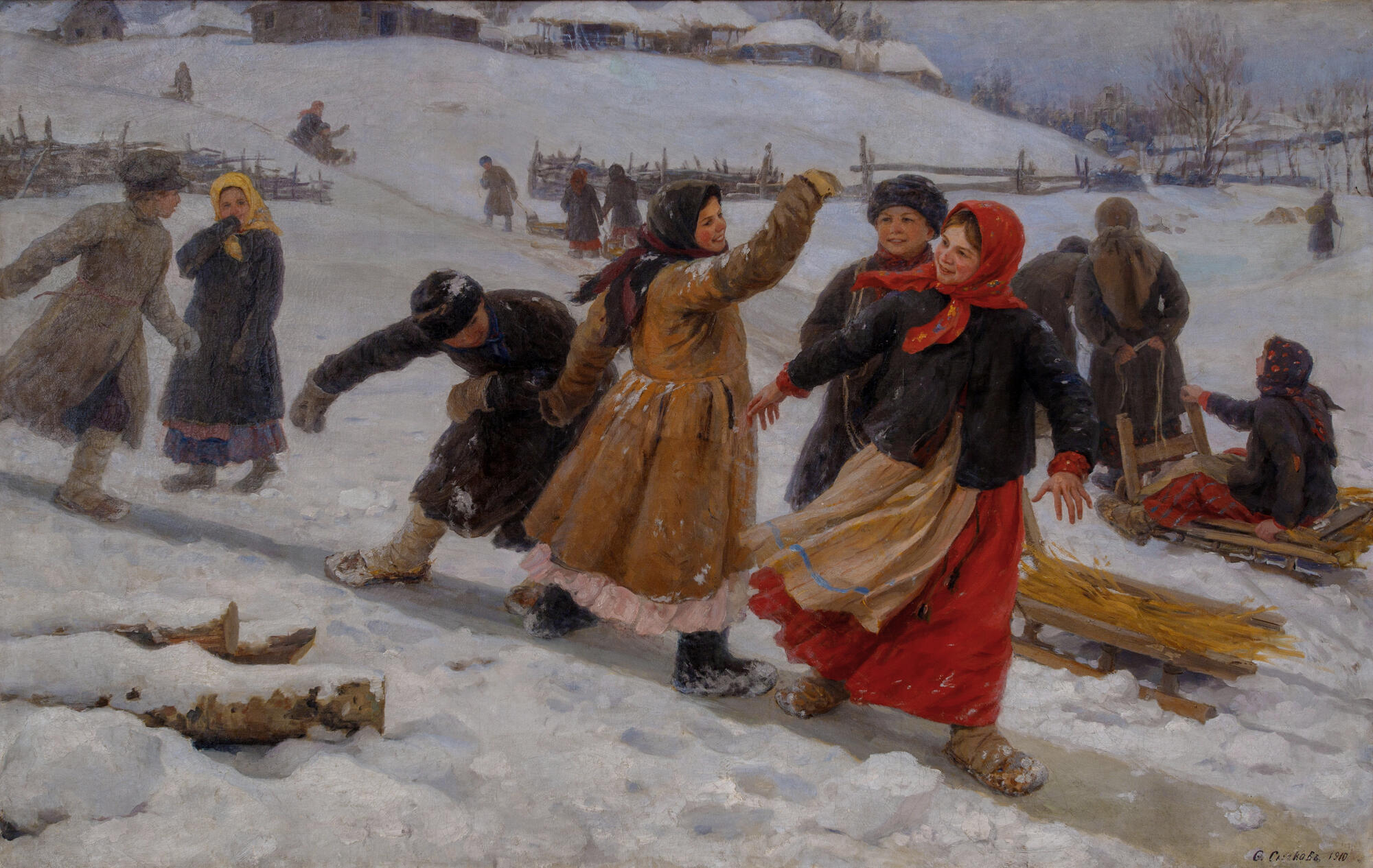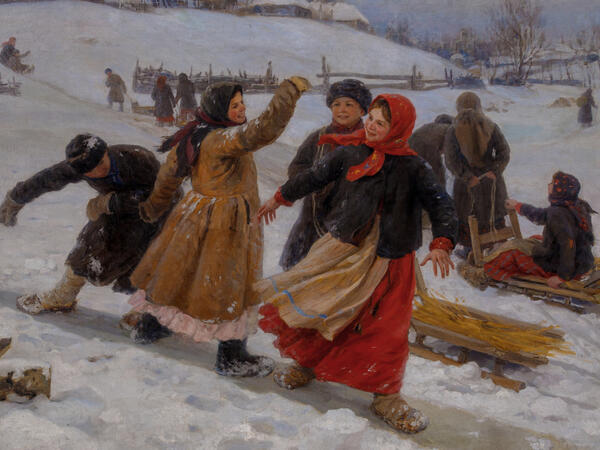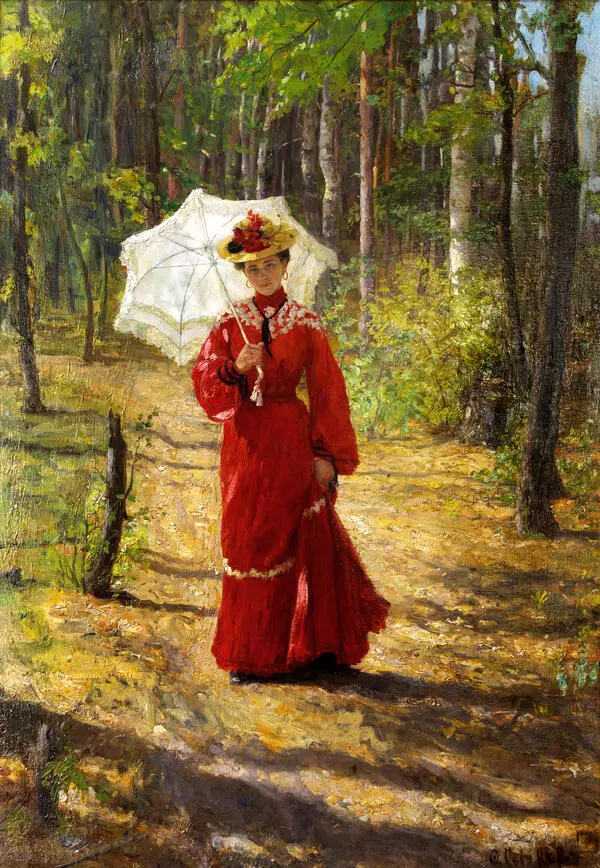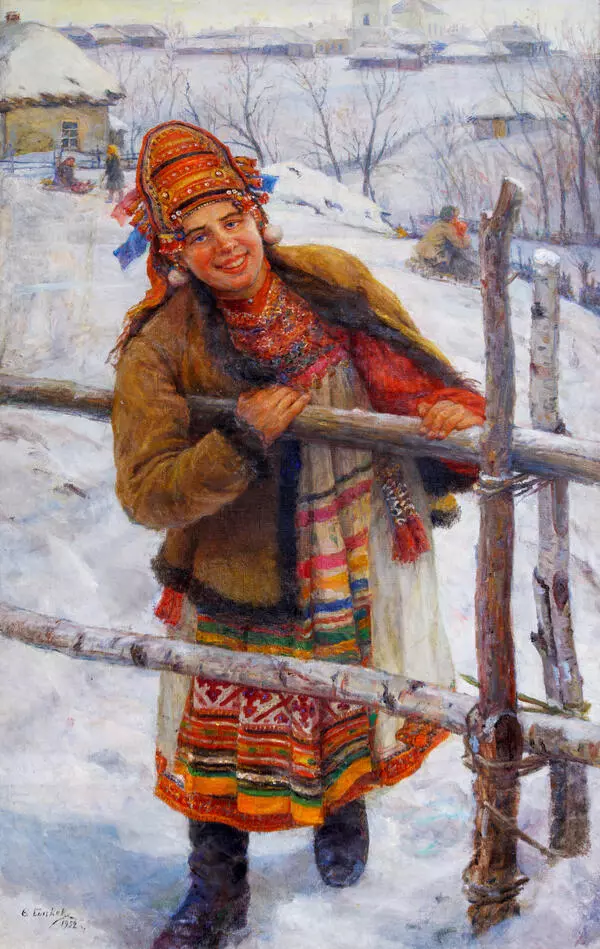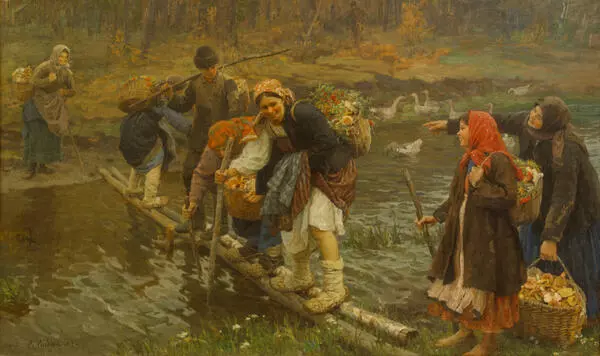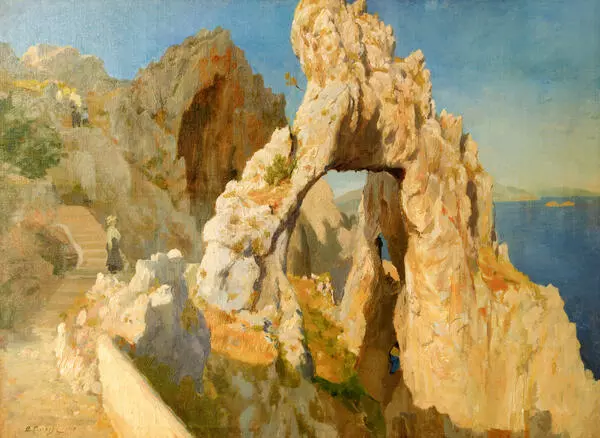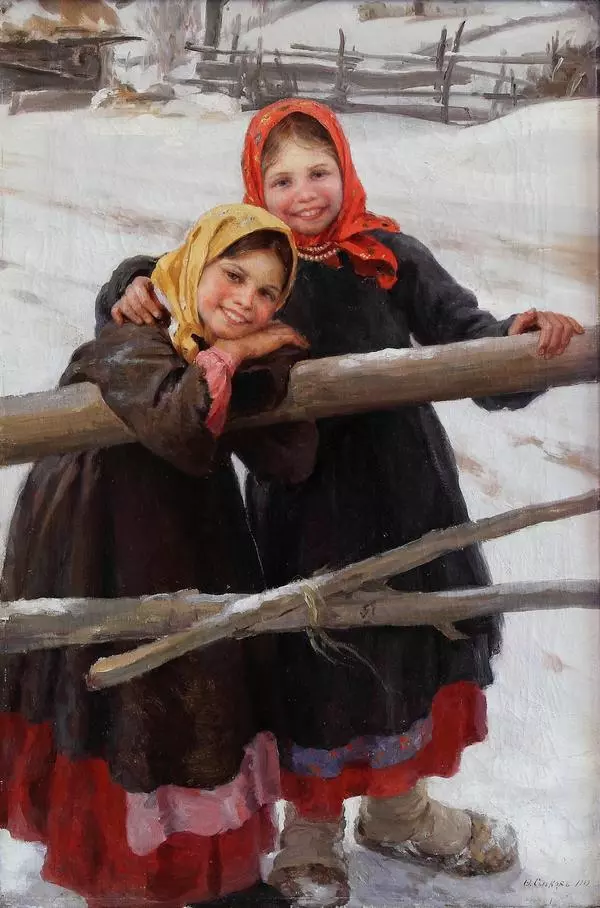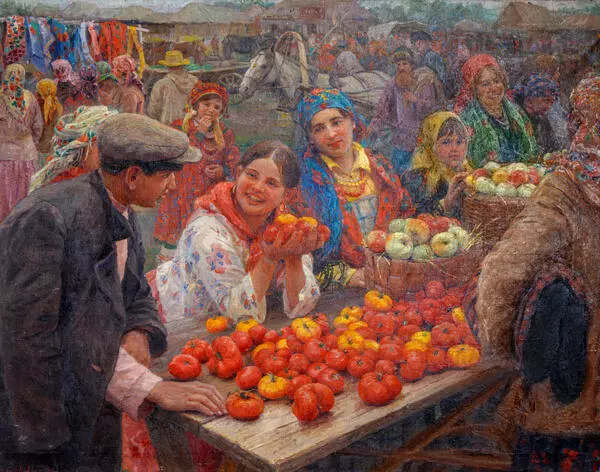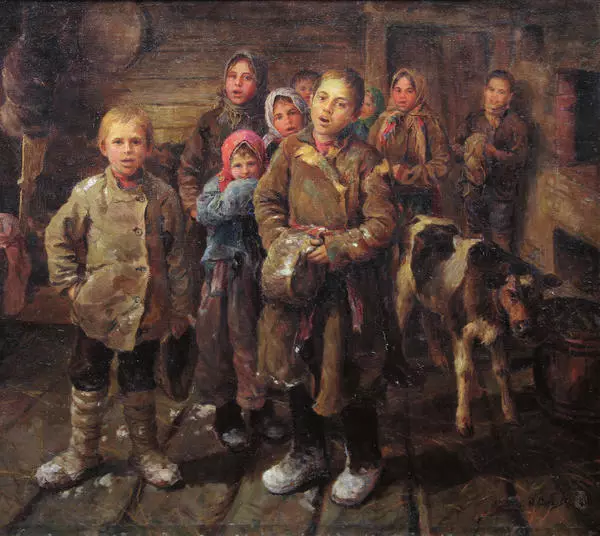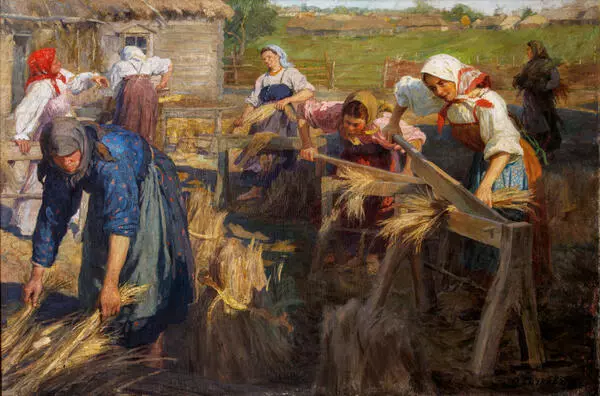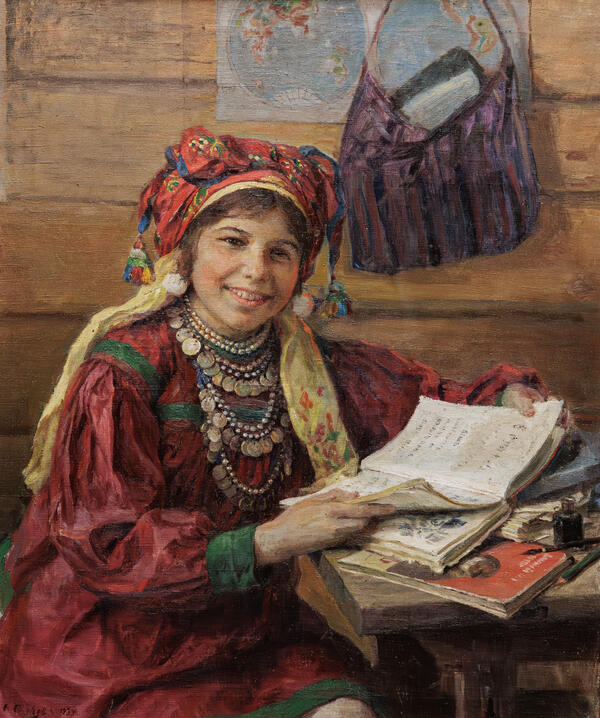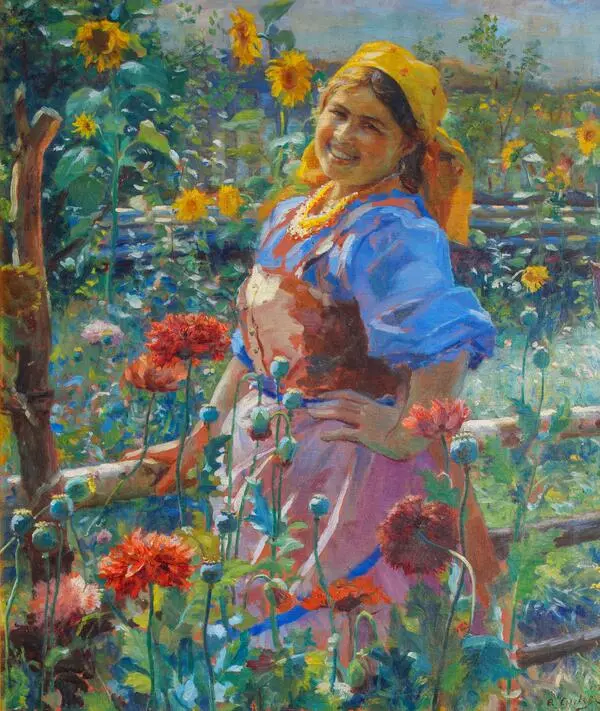‘Down the Hills’ is the first painting of Fedot Sychkov dedicated to the festivities of village children. Such paintings with somewhat idyllic scenes were very popular with the general public. ‘Richard’ and ‘Lapin’ publishing houses printed them on their postcards. The paintings could also be found in many popular magazines of that time (‘Niva’, ‘The Sun of Russia’, ‘The Motherland’).
In this 1910 canvas, the artist captured a group of children riding down an icy hill. The noisy action takes place on the snow-covered slopes near the Moksha River. Two girls ride on the hill without a sled, right on their feet. A boy in dark clothes dashes after them, he bents over so as not to lose his balance. A boy, who pulls a sled with straw up through the snow, looks at this group with admiration.
In the background, another icy hill with children riding and climbing up is visible. That hill is separated from the foreground by a horizontal fence — a wooden fence made out of woven twigs and branches. Behind the mountain, there are silhouettes of izbas (huts) and a whitish patch of the sky.
The first decades of the twentieth century were the most rewarding years in the artist’s career. Over that period, he created about fifty paintings. There were more than ten large, themed paintings among them: in 1910, ‘Return from the fair’, ‘Rinsing Girls’, and ‘Down the Hills’ were painted. A year later, the artist created ‘Country wedding’. In 1914, Fedot Sychkov painted ‘Country Wedding’ and ‘Skating Carnival’, while in 1916 — ‘Blessing of The Water’. All of them were highly praised at numerous academic, national, and international exhibitions.
While working on these paintings, the artist mastered the complex art of creating large multi-figure compositions. He masterfully arranged the characters so that none of them looked out of place. The artist gave each character their own traits — one can contemplate different emotions on the faces of various children for a long time.
In his artworks of that time, the color scheme was rather restrained. They do not yet have those bright colors that appeared in Fedot Sychkov’ paintings of 1920-1930. During that period, the artist developed his style and took inspiration from Russian realist painters of the 1880s. His style was distinguished by natural colors, he specifically chose his colors to be as close as possible to the natural ones. But the paintings still looked festive and vibrant: they attracted the audience by the vividness of the scenes and the cheerfulness of the worldview itself.
In this 1910 canvas, the artist captured a group of children riding down an icy hill. The noisy action takes place on the snow-covered slopes near the Moksha River. Two girls ride on the hill without a sled, right on their feet. A boy in dark clothes dashes after them, he bents over so as not to lose his balance. A boy, who pulls a sled with straw up through the snow, looks at this group with admiration.
In the background, another icy hill with children riding and climbing up is visible. That hill is separated from the foreground by a horizontal fence — a wooden fence made out of woven twigs and branches. Behind the mountain, there are silhouettes of izbas (huts) and a whitish patch of the sky.
The first decades of the twentieth century were the most rewarding years in the artist’s career. Over that period, he created about fifty paintings. There were more than ten large, themed paintings among them: in 1910, ‘Return from the fair’, ‘Rinsing Girls’, and ‘Down the Hills’ were painted. A year later, the artist created ‘Country wedding’. In 1914, Fedot Sychkov painted ‘Country Wedding’ and ‘Skating Carnival’, while in 1916 — ‘Blessing of The Water’. All of them were highly praised at numerous academic, national, and international exhibitions.
While working on these paintings, the artist mastered the complex art of creating large multi-figure compositions. He masterfully arranged the characters so that none of them looked out of place. The artist gave each character their own traits — one can contemplate different emotions on the faces of various children for a long time.
In his artworks of that time, the color scheme was rather restrained. They do not yet have those bright colors that appeared in Fedot Sychkov’ paintings of 1920-1930. During that period, the artist developed his style and took inspiration from Russian realist painters of the 1880s. His style was distinguished by natural colors, he specifically chose his colors to be as close as possible to the natural ones. But the paintings still looked festive and vibrant: they attracted the audience by the vividness of the scenes and the cheerfulness of the worldview itself.
